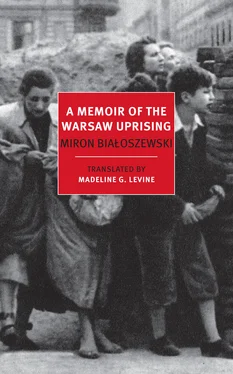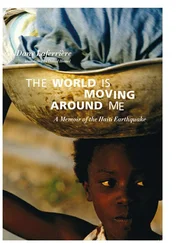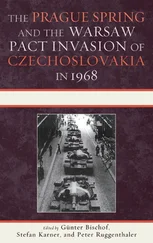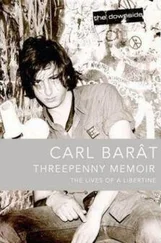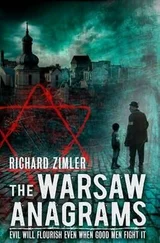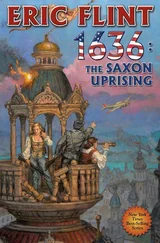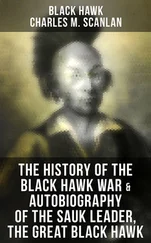Miron Bialoszewski - A Memoir of the Warsaw Uprising
Здесь есть возможность читать онлайн «Miron Bialoszewski - A Memoir of the Warsaw Uprising» весь текст электронной книги совершенно бесплатно (целиком полную версию без сокращений). В некоторых случаях можно слушать аудио, скачать через торрент в формате fb2 и присутствует краткое содержание. Год выпуска: 2015, Издательство: NYRB Classics, Жанр: Биографии и Мемуары, на английском языке. Описание произведения, (предисловие) а так же отзывы посетителей доступны на портале библиотеки ЛибКат.
- Название:A Memoir of the Warsaw Uprising
- Автор:
- Издательство:NYRB Classics
- Жанр:
- Год:2015
- ISBN:нет данных
- Рейтинг книги:4 / 5. Голосов: 1
-
Избранное:Добавить в избранное
- Отзывы:
-
Ваша оценка:
- 80
- 1
- 2
- 3
- 4
- 5
A Memoir of the Warsaw Uprising: краткое содержание, описание и аннотация
Предлагаем к чтению аннотацию, описание, краткое содержание или предисловие (зависит от того, что написал сам автор книги «A Memoir of the Warsaw Uprising»). Если вы не нашли необходимую информацию о книге — напишите в комментариях, мы постараемся отыскать её.
A Memoir of the Warsaw Uprising — читать онлайн бесплатно полную книгу (весь текст) целиком
Ниже представлен текст книги, разбитый по страницам. Система сохранения места последней прочитанной страницы, позволяет с удобством читать онлайн бесплатно книгу «A Memoir of the Warsaw Uprising», без необходимости каждый раз заново искать на чём Вы остановились. Поставьте закладку, и сможете в любой момент перейти на страницу, на которой закончили чтение.
Интервал:
Закладка:
More about our occupations. We started taking strolls. Swen and I. A stroll consisted of our linking arms and walking through all the cellars of our block in turn. At the end of the chain of our block B there was a tunnel. A long one. Covered with cement. Under the courtyard. Under those potatoes and pumpkins. And we frequently went through this tunnel on an inspection tour of the second chain of shelters, beneath block A. To be precise I should add (later I will be talking not only about specific details but about our life in this terrain) that two additional lateral blocks also belonged to block B, smaller ones, which actually formed a single unit with our block, although one of them had its own triangular courtyard. So, that is where we walked. Our strolls lasted a long time. Because there were many people in each cellar. In the corridors and the narrow passageways, too. And there were also little cellars along the way. Without doors. Just open compartments. We had new acquaintances in one of them. A young couple. We used to go there to gossip and to listen to their cricket. Because there was a cricket in the wall there. Actually, there were other crickets, too. But this one was the loudest. In one of the most distant of the large cellars we found an acquaintance, Leonard. He was usually sitting on some bundles, probably not his own. He was alone. Or perhaps he sat on some small bricks? Skinny. With glasses. And he had on a white coat. That’s right. Leonard lived on Rybaki Street. At number 23, I think. In a five-story apartment house on the side of Rybaki that wasn’t ours. Facing the escarpment. I shall write more about Leonard’s building, which was still standing then. About this building that was still standing (so either Leonard came here earlier in search of a safer place since our cellars, after all, were made of reinforced concrete, or I have placed various events about a week too early), about this building of Leonard’s I’ll write more later. About a bi-level apartment house traversed by the route to Nowe Miasto, at first one of two in all Starówka and later the only one that remained until the very end. Leonard definitely dropped in on us at times. But I remember him more often in his own cellar. In the bright illumination of an electric bulb. Perhaps it only seemed bright then. Because there was so much darkness. Underground. Against the background of the red walls. Because the walls there were terribly red. The same, after all, as ours. However, I think they didn’t have cement pillars there. I think Leonard was very sad during our last meetings. Undecided. About where he should go. When his home no longer existed. He was trying to decide, like us, whether he should go up to the Sisters of the Holy Sacrament. Finally, one day he told us he was going there. I think. On our next walk we didn’t see him. Later there was no way we could meet him. Only after the war and after our return to Warsaw did we find out that that’s what he had done. That he had gone to the Sisters of the Holy Sacrament. And that he was buried there with the rest of the people. Then, in 1946 or so, someone else said that he’d been buried alive at the Sisters of the Holy Sacrament but that he’d made his way to a small window, had dug himself out, and that, it seems, he’d just walked away from there. But then someone else said, I think, that that was probably not true. Especially since neither we nor anyone else at all has seen Leonard since the uprising. Nor even heard about him being alive since the uprising.
People had settled in the tunnel although there was also the most traffic and occasionally a draft there. A terrible draft at any hour of the day and night, despite the heat. In fact, it eventually became cold there. Once, when we were wandering about the cellars during a terrible bombardment of our blocks, we were driven by blind, dumb instinct in the direction of block A. Through the tunnel. Naturally. The whole family with all our bundles. After all, on one of our walks there we had found my distant cousin — Aunt Trocińska, the sister-in-law of Aunt Józia. I might not even have recognized her. But she tugged at my sleeve joyfully. She had been living in block A during the occupation. So she was there under her own house. And after her first shelters had become unbearable, she’d moved to the tunnel. She was alone. She had only a few belongings. I remember that she lived right beside the door that led from block A. She insisted that we move there. Swen and I quickly returned to our family, to the first cellar. And in the evening, probably quite late, almost at night, we enthusiastically marshaled our entire family, who trudged along after us through the tunnel to a wall near the same door as Aunt Trocińska. There were still only a few people in the tunnel. Just those drafts, the slamming of doors, and people rushing through with or without bundles, faster and faster because one probably can’t speak of slowness during the uprising. That same night, I think, many more people settled down near us in the tunnel. In the morning the tunnel was already congested. We remained there not more than thirty-six hours. Perhaps not even that long. We weren’t frightened away by the people. Just by the drafts. During the first night we were already freezing. And probably the second night drove us out. Right at the beginning. There wasn’t very much to cover ourselves with, after all. Why have such useless luxuries when it was summertime? And when it smelled of heat and fires everywhere? Again I’ve run ahead of myself.
We recognized an engineer in the cellars of block A. Later, when Swen was leading the prayers in front of our altar, we collaborated on writing a real litany. I remember from this litany:
From bombs and airplanes — save us, Lord,
From tanks and Goliaths — save us, Lord,
From shells and grenades — save us, Lord,
From fires and being burned alive — save us, Lord,
From being shot to death — save us, Lord,
From being buried — save us, Lord…
The litany was quite long. We recited it one evening. Aloud. It caught on immediately. The other cellars began reciting it, too. I remember that we wrote it down for the engineer. The next evening that engineer met us and said, “Do you know, at this moment fifteen hundred people in my block are reciting your litany.”
There were at least three thousand of us at that one address. There were three hundred or three hundred fifty partisans alone. They kept coming in. Just like the civilians. From other bombed-out houses. Like Leonard.
Swen’s recitation of prayers stemmed more from his acting ability than from piety. Before that, the prayers were rather monotonous. They became interesting when Swen took over. And more sensible. In addition to his acting ability, Swen had a sense of what was vital or, rather, of the most urgent needs. After one evening prayer, I think it was the day when the men were fighting with axes near the entrance to the little shelter (they really didn’t do any harm to each other, in the final analysis), Swen turned from the altar to face everyone.
“Please, let us swear to each other that we will not quarrel.”
“We swear,” the entire crowd repeated obediently.
And it actually helped. At least for a while. Then Swen repeated it. And again the shelter obediently swore. Again it helped for a while. So they weren’t just words.
I am returning now to the course of events. To the friendly tram couple. The date, August 12, is connected with them.
On August 12 a few people left our shelter as was common during the daytime to run some errands, I don’t know for what exactly — for food, water, to do rescue work, perhaps for a duty tour on the barricades — and the tram driver was among them. For the time being, we had become accustomed to the shells. To the bombardment. From Praga. From the gunboat on the Vistula. And from the armored train on the tracks at the Gdańsk Station. These shellings weren’t as frequent yet as they were to become a little later. In any case, August 12 itself was a turning point. In the afternoon, while they were gone, Stare Miasto suddenly shook from several repeated explosions and strong wind blasts. It was something entirely new, like a typhoon. It seemed clear to us that the upper floors throughout lower Starówka had been torn off. At any rate, people said that all the roofs had been ripped off. An unknown weapon. And people did have a feel for the varieties of weapons. They rushed out to check. And returned with the news about the roofs. That it was something really bad. Some sort of “V.” Panic erupted. What could it be? But not for long. Because shortly afterward the same thing was repeated. Until then the nights had been peaceful. There were no planes during the night. There were sudden artillery attacks. And other things. Such as tanks. But from then on this new weapon — mine throwers — began stalking us, especially at night and more and more frequently several times a night.
Читать дальшеИнтервал:
Закладка:
Похожие книги на «A Memoir of the Warsaw Uprising»
Представляем Вашему вниманию похожие книги на «A Memoir of the Warsaw Uprising» списком для выбора. Мы отобрали схожую по названию и смыслу литературу в надежде предоставить читателям больше вариантов отыскать новые, интересные, ещё непрочитанные произведения.
Обсуждение, отзывы о книге «A Memoir of the Warsaw Uprising» и просто собственные мнения читателей. Оставьте ваши комментарии, напишите, что Вы думаете о произведении, его смысле или главных героях. Укажите что конкретно понравилось, а что нет, и почему Вы так считаете.
